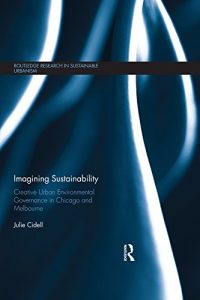Cities, rather than nations, have become the key sites for enacting environmental policies. This is due to the combination of growing urban populations and increased action on the part of local governments (generally attributed to national governments’ failure to act on climate change).
Imagining Sustainability seeks to understand how actors in local government conceptualize sustainability and their role in producing it, and what difference that understanding makes to their physical, political, and social environments now and in the future. International comparisons can uncover new ideas and possibilities. Chicago and Melbourne are prime candidates for such a comparison: they are cities of the same age, they have similar historical trajectories as interior gateways followed by industrial growth and then deindustrialization, and they have demonstrated the same recent desire to be global champions of sustainability. Based on qualitative fieldwork in these two cities, this book uses Karen Barad’s methodology of diffraction to read these case studies through each other. This methodology helps to understand not only what differences exist between these two places, but what effects those differences have on the urban environment.
This book will be of great interest to students and scholars of urban studies, urban planning and environmental policy and governance.












